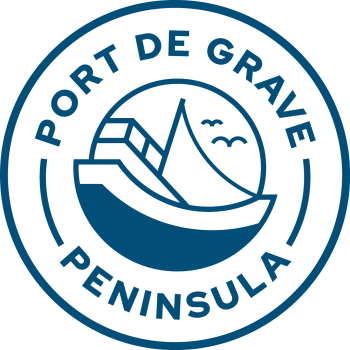ISSN 0317-7076
Volume 15, Number 2
March· April 1986
The first mention of the community is as Hibbs Hole in 1692. Holes, which were steep sided coves too small for a vessel to turn around, were usually named after
the first person to put in there. Hibbs Hole, the community name until it was changed to Hibbs Cove in 1968, may originally have been Eb’s (Ebenezer’s) Hole, but another popular story says that there was a planter named Hibbs who had three daughters who married a Lear, a Petten and a Kennedy living in adjoining coves.
Other early families in the area were the Bishops and Kennedys and the only Dulty family in Newfoundland lived at Hibbs Hole; his four daughters married local men, including a Kennedy and a Dawe. The small settlement of Pick Eyes (or Pickey’s) was first mentioned in 1784 and may have come from the original spelling of the names of William and Elias Picco who owned land in the area. The first merchant, a man named Campbell, claimed to have three plantations at Hibbs Hole at the time of the second French raid of 1705.
Hibbs Hole was mentioned in the first census in 1857 when there were 164 residents and the community was connected to Port de Grave by a road completed sometime after 1843. The population reached 183 in 1869 and then declined to below 100 in the late 18005 and early 1900s. The adjoining community of Pick Eyes was active from the early 1800s but reached a peak population of 88 a century later when it became part of the larger community. In 1857 there were five boats with 12 nets and seines operating out of Hibbs Hole, but later on the inshore and Labrador fisheries involved as many as 76 people in cod and herring. Twenty-eight fishermen and 20 fishermen-farmers were listed for the community in 1891. Farming also became important in the 1800s as the region’s population increased.
In the early years all residents were members of the Church of EngIand and attended St. Luke’s Church in adjoining Ship Cove. The first school, opened in 1855, had 36 pupils in 1858. The one-room school had 46 pupils in 1911, including children from both Salvation Army and Methodist families, and was the community’s only school until its closure in 1935. No churches were ever built in the community, although there is now a Pentecostal parsonage.
By 1911, eight local men were working at the Bell Island mines but the inshore fishery remained the most important activity. All 15 Pick Eyes families were dependent
on it and supplemented their incomes with farming. By 1921 Hibbs Hole had 24 fishermen and 17 fishermen-farmers. By the 19305 the fisheries had declined to the point where only 59 people remained in 1935. After 1960 the population rose once more and
peaked at 187 in 1966. Fishing for cod, herring, mackerel and caplin continued to be the main activity.
In 1968 Hibbs Cove had 28 fishermen, six laborers and two working in a profession. Four boats fished for turbot of the northeast coast in the fall, one of which landed 300,000 lbs. The local fishermen operated 19 boats, employed 44 men and se141 cod traps and 472 gill nets, second only to Port de Grave on the peninsula. Hibbs Cove fishermen landed 7,500 quintals of cod from traps in 1968 and another 3,450 quintals of cod and turbot in the fall fishery.
In 1967 Artist George Noseworthy, started a fisherman’s museum in an old schoolhouse and in 1970 moved to a new building constructed by local people on the hill overlooking Lear’s Cove. The community museum shows aspects of a fisherman’s life from 1700 onwards. Among the first artifacts were an old cannonball dating back to 1696, a deadbox used as a coffin on the Labrador. a spring balance, and a wooden cradle made
by Joseph Bishop in 1902, all still on display in the museum. The new building was partly financed by a collection of codfish from local fishermen sold to George Dawe
& Sons in Port de Grave and by charter memberships. The museum sponsored a music and art school for the area’s youth for several years and was given the two- storey “Porter House” in the late 1970s. This house was donated by George Noseworthy who had bought it from the Porter family. The house was furnished by John C.Porter when he moved in with his bride Ida Newell in 1906 and is a popular tourist attraction.
Most of the Hibbs Cove longliners continue to fish off Cape St. Francis which was first visited when fish became scarce in the Bay in the l950s. The focus of the fishing industry has changed in recent years with a growing emphasis on the crab and halibut fisheries and less reliance on cod and herring. A high proportion of the working population works in the fishery, although there are jobs in the service sector for local residents. In 1983
many Hibbs Cove students were bused to elementary schools in other parts of the expanded community of Port de Grave or to Coley’s Point and to high school in Bay
Roberts.
The roads in Hibbs Cove still wend their way from the pond that marks the boundary with Ship Cove to the old settlements of Lear’s Cove, Hibbs Hole, Kennedy’s Cove and Pick Eyes as they did in the 1950s when R.A. Parsons wrote:
And view it: climbing from the sea to meet
By lane and passage-way the narrow street,
That courses through it, and continues to hold
Its way along by slope and rock face bold
Until it reaches Hibbs ‘Ole, thence to stray
At will, or altogether lose its way.
-from Sa/ute to Port de Grave by R.A. Parsons, published
in 1975 used with permission.

